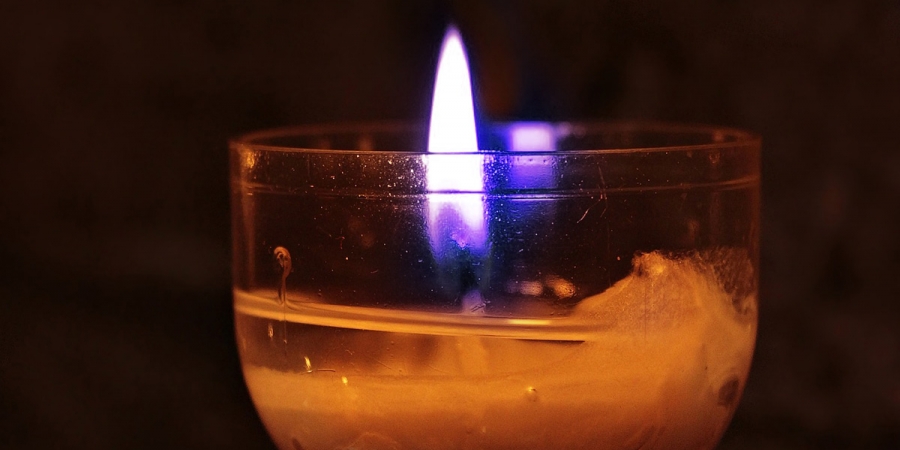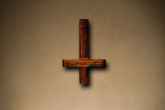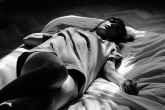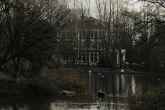Flames Turn Blue In The Presence Of Ghosts
January 05, 2024 1:00 AM ‐ Paranormal • Ghost Hunting

Photo: © NoName_13
Have you ever heard the claim that flames turn blue when a ghost is near? It's an idea that hasn't stood the test of time but was once a commonly held belief relating to the world of the paranormal, so let's see if there's any truth to the claim.
It's all based on the belief that supernatural entities can influence the environment in various ways, including altering the conditions in such a way as to alter the combustion process, leading to a blue flame. There's nothing odd about a blue flame itself, you've probably seen one if you have a gas stove or have ever used a blowtorch, but a candle burning blue, for example, shouldn't happen under normal conditions.
A flame's colour can change for various reasons, most notably due to the temperature and the chemical composition of the material being burned. A blue flame is typically hotter and indicates more complete combustion compared to a yellow or orange flame. Blue flames can also occur in the presence of specific materials, such as copper.
It was thought - perhaps it still is by some - that using a flame as a ghost hunting tool or even a method of detection is a cost-effective way to investigate supernatural claims. Ghost hunters might look for changes in flame colour as potential indicators of paranormal activity.
It's good practice to approach any paranormal claim with a critical eye, considering all possible natural explanations before attributing them to paranormal causes, but if you are able to rule out all atmospheric and physical explanations, then what does that leave us with, and how exactly could a ghost, which is often said to have no physical form, affect a flame?
If we assume for a moment that a spirit can make a flame turn blue, then there are a few ways it could achieve this. Popular explanations for just about anything paranormal often involve the word "energy" being bandied around and often involve claims that spirits can somehow manipulate this energy. Well, in this case, if a spirit could somehow inject more energy into the combustion, then it could theoretically make the flame burn hotter and with a blue colour.
Another idea could be that a ghost has the ability to alter the chemical composition of the air or the material being burned. It's a theory that stretches the boundaries of current scientific understanding, but it doesn't go without precedence in the realm of the paranormal. Spirits are also said to be able to produce scents or odours, which could also involve a sudden change in the chemical composition of the air.
Perhaps the colour change could be caused by a spirit introducing certain elements or compounds, like copper salts, into the flame. This idea isn't dissimilar to the phenomenon of apports, which is when a physical object appears out of nowhere through a supernatural mechanism. Could copper salts or other materials or gases be apported directly into the vicinity of the flame?
We should also consider temperature modifications. Ghosts are often associated with cold spots in haunted locations, but ghost hunters often report sudden jumps in temperature and unexplained hotspots caught on thermal imaging cameras. Since a higher temperature could result in a hotter, blue flame.
Another possibility might be that a ghost can't physically change the flame's colour after all, but it might be able to affect how we perceive it. This theory leans towards the ghost influencing the mind or the visual perception of the observer, making them see the flame as blue, even though physically it hasn't changed. It is similar to the idea of place memory or stone tape theory, where certain people might experience sights and sounds from the past while others don't have the same experience.
And while we're theorising about the properties of ghosts, we shouldn't forget that spooks are often closely linked to the electromagnetic fields, often said to be in such a way that they can influence or generate them. Let's not forget that visible light is part of the electromagnetic spectrum and therefore should be open to manipulation too, if we are to assume that other parts of the spectrum are. If light can be manipulated in this way, then it could alter the appearance of a flame to the human eye, making it seem blue.
It's important to remember that these ideas are purely speculative and not supported by scientific evidence, but like any paranormal theory, the best way to test it is to try it yourself, and the way to do that is by trying candle divination. Also known as ceromancy and more commonly associated with spiritual practices, this is the idea that spirits can communicate through the movement or behaviour of a candle's flame. This concept is rooted in age-old traditions and is still practiced in various forms today.
In candle divination, a spirit is said to be able to influence a candle's flame to convey messages, which are interpreted through the size, direction, or movement of the flame. For example, a suddenly flickering or swaying flame could be seen as a response to a question, or an unusually bright flame might be interpreted as a positive sign.
Again, this concept falls outside the realms of accepted science but could also be the result of energy manipulation, an influence on the air around the candle, or atmospheric changes.
While candle divination is a traditional aspect of spirituality, it's important to approach it with a critical mind. The biggest problem with this method of divination is the highly unpredictable nature of a candle flame. This unpredictability can lead to a high likelihood of false positives, where natural variations in the flame's behaviour are misinterpreted as paranormal activity or communication. Natural factors like draughts, air currents, and the physical properties of the candle itself can cause changes in a flame’s behaviour, which might be interpreted as spiritual communication.
Step-By-Step Guide To Candle Divination
1. Prepare Your Space: Choose a quiet, draught-free area with a table or solid flat surface.
2. Select a Candle: Place a new candle securely on the surface or in a holder.
3. Light the Candle: Light your candle with a match or lighter, then sit comfortably and focus on the flame.
4. Set Your Intention: State your purpose for the session, whether it's seeking guidance, general insight, or to communicate.
5. Observe and Ask: Watch the flame as you ask your questions. Note if the flame flickers, changes size, or intensifies.
6. Interpret the Responses: Consider the flame's reactions as potential answers or indicators. Steady might mean 'yes', flickering could be 'uncertain', and a strong flame might signify a strong presence or 'no'.
7. Conclude the Session: Once finished, thank the space or spirits and blow out the candle.
Related Content
Daily Horoscopes
You May Also Like
























